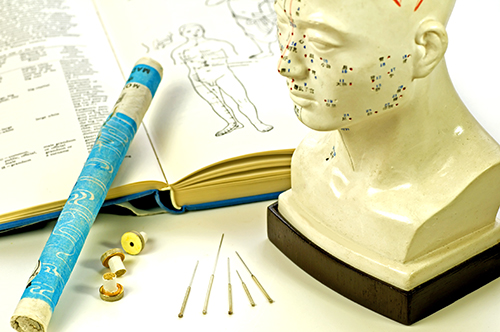This article originally appeared in Claudia's newsletter. To subscribe, click here.
First things first:
Quite a few of you have written to ask me how I manage my pain. I am not a doctor. I only know what works for me. There are a lot of experts who write about this topic, so I'll share links.
This is MY list. This is what I do. I'm not going to debate the science. You asked what works for me - and that's what I'm going to tell you.
Please talk to your doctor before you try anything. Please try things out for yourself. Don't just take my word for it. Follow the links, talk to your folks, and give it a shot.
Also, this is what works for me right now. If we talked tomorrow, I might be doing something different. And some strategies change with the seasons. For example, I tend to use more ice in the summer and heat in the winter.
You need to uncover what works for you at this moment in time, and be flexible to try something new tomorrow.
Here are my top five day in day out strategies that help with my pain.
- Anti-inflammatory diet: The basic idea is that processed foods, fast food, fried foods, and most meat can cause your immune system to move into hyperdrive. Inflammation=pain. An anti-inflammatory diet is basically a whole food diet with an emphasis on more oils (like fish oils) and more vegetables. The actual nutritional science is supported by long distance runners such as Scott Jurak and Rich Roll. Oh, and me!
- Most of the time, pain is just pain: The mind is always trying to make sense of what's going on in the body. When you're in pain, your mind often interprets your pain as something to panic over or feel victimized by ("Why is this happening to me?"). Most of the time, pain is just pain. It doesn't mean anything. You need to learn when pain is something to pay attention to (injury, life threatening), which is rare, or when it's just pain.
- Move your body every day: The body was designed to move. Pain makes us want to stop. This is exactly the wrong thing to do. Lack of movement makes your pain worse and keeps your mind stuck. Sometimes, the most I can do is walk and other times the best I can do is take my joints through slow range of motion exercises. Start slow. Find what you can do when you're at your worst -- and get going.
- Know your neutral position: My least painful position is lying on the floor with my knees on a chair or bed. I sleep this way when my body is inflamed and I'm in pain. The opposite of this is arching your back. Which one works best for you? You need to know what your best position is so that you can use it when you need to.
- Ice always works: I personally hate ice, but it always works. Every professional athlete ices before and after every game. Ballerinas often ice up before a performance. If you want to do something, ice is your friend.
Pain medication is a liar: The only thing pain medication tells you is to take more pain medication. It doesn't help with chronic pain and should only be used in emergency situations. Just had surgery? Take the meds. It's been a while? Get off the meds. Anything else, and you're putting your life in danger.
What works?
Click the links for articles about why these strategies work.

- Acupuncture - community acupuncture is relatively new and usually less expensive.
- Heat or ice - both at different times
- Core strength - this is how I can stand with my hip problems
- Meditation - my favorite? Mindfulness Meditation Jon Kabat-Zin and Holosync
- EMDR - helped me take the "meaning" out of the pain
- Gentle movement - yoga, Tai Chi, I use a mini-trampoline
- Balance training - both standing and life.
- Sex, of course.
Final thought about pain
Frankly, life is painful. Everyone in every life feels some pain -- emotional, physical, spiritual or a combination of all three. No living creature is able to avoid ever being in pain.
Pain isn't something that happened to you. Pain doesn't have anything to do with you.
Pain just is.
In Western culture, we're taught to avoid pain at all costs. This is an impossible task!
Pain is a natural part of life. Suffering, however, is optional.
I hope this helps! If you have questions for me, email me or contact me through my LinkedIn profile.

